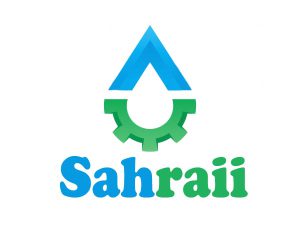Used Oil Recycling Equipment With Best Quality Is For Sale , For Get Latest Price Contact Us.
What is used oil
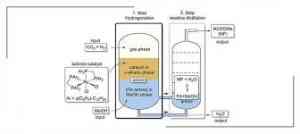
By now, you have heard the name of spent oil recycling a lot. Do you know what steps must be taken to recycle the oil? Mineral oils during operation, as a result of reaction with oxygen and heat decomposition, polar and asphaltic unsaturated compounds produce oil. Also, they get mixed with other foreign materials such as dust, fuel, carbon and metal particles and lose their efficiency.
Such oil is called used oil. Oil recycling is a set of methods that can be used to return used oil to the industrial cycle and use it. In this article, we intend to get to know a lot of information related to the recycling of burnt oil and recycling methods such as thin film, and fully understand the question of what is thin film.
In addition to the above economic and environmental benefits, the second treatment of used oil preserves the valuable natural resources of crude oil. You must ask yourself what the first treatment of oil is like? For this reason, it is suggested to learn more about oil purification and the first type of purification steps.
For Price Of Used Oil Recycling Equipment Contact Us Now.
Used Oil Recyling Benefits
Considering that the majority of lubricants are base oils (more than 95% by weight of a lubricant formulation consists of base oils), many countries obtain their base oils through the re-refining of used oils. They supply with modern environmentally friendly methods.

Some of the advantages of the second treatment of used oil are as follows:
- Preservation of natural resources of crude oil (42 liters of crude oil are needed to produce 1 liter of oil)
- Less dependence on foreign sources for base oil supply
- Preservation of underground water resources and ecosystem of oceans, rivers, lakes and nature
- Reducing environmental risks
- Energy saving
- Preventing the production of greenhouse gases
It depends a lot on the pressure and temperature used in the hydrofinishing unit. After this stage, the oil is ready to be mixed with different additives.
Our Professional Team With More Than 25 Years Of Experience In Manufacturing Used Oil Recycling Equipment Are Ready For Your Order.
Methods And Technologies
Washing with alkali and second distillation :
In the third method of oil recovery, it is washed with an alkali and followed by second distillation. The used oil is dewatered by increasing the temperature to about 120 ºC, and after passing through the heat exchangers to reduce the temperature to less than 45 ºC, the extraction and washing operations are carried out with an aqueous solution of calcium carbonate and soda.
After a period of 10 to 12 hours, the sludge settles and separates from the oil phase, which constitutes approximately 20% of the total weight of used oil.

After sludge removal, the separated oil is transferred to the distillation unit, where its temperature increases up to 350 ºC at the same time as it is mixed with the dye-absorbing soil. The light fractions of base oil and diesel are separated in the distillation operation, and after the filtration stage, the base oil is separated from the filter cake and stored in storage tanks for other processing steps to produce final products.
This method in oil recycling is now used in many units in the country due to the low cost of production line machines and equipment as well as consumables.
One of the main disadvantages of this method is the relatively high amount of sludge produced as production residue and the problem of its disposal due to the creation of environmental problems in the long term.
Also, the base oil produced in this way generally does not have a good color and smell and does not have a high ignition point for the production of products such as motor oil.

Thermal cracking in distillation and acid wash operations
In this method, the used oil entering the factory, after preliminary dewatering in the preheater, enters the simple distillation tank, and during the distillation process, diesel and light materials are separated from the boiled oil up to 370 ºC, and finally, with the complete oxidation of the additive compounds remaining in the oil, the thermal cracking process is reduced.
Boiled oil is cooled in heat exchangers to 40 ºC and then acid wash tanks with about 10% by weight of boiled oil are mixed with 98% concentrated sulfuric acid and washed, and after 10 to 12 hours, The acid sludge operation, which constitutes approximately 10% of the weight of the oil, begins. After sludge extraction, the oil washed with acid or neutralized lime water is mixed with dye-absorbing soil in the tilling unit and heated up to 160 ºC, and then the base oil is separated and extracted from the filter cake with a filter press. be made

High volume of acidic sludge, unpleasant and annoying smell, harmful vapors of sulfuric acid due to its high consumption in the acid wash unit, the problem of controlling the high acid number standard of the produced base oil, and the increase in the color of the base oil to the point of redness in tropical areas due to Exothermic reaction of acid sulfonation with oil aromatic hydrocarbons is one of the major problems and disadvantages of using the above method.
Catalytic hydrogenation
This process is a refining process in which the products of distillation react with hydrogen in the presence of a catalyst at high temperature and pressure. Today, this process is used by a large number of base oil manufacturer. The advantage of using this method is very little waste in the process of oil production and oil recycling.
The hydrotreating process causes a large percentage of the aromatic hydrocarbons in the oil cut to become saturated hydrocarbons and thus become useful products. The three types of hydrotreating process that are used are:
- Hydrofinishing : It is a process with medium performance conditions that separates minor residues of harmful substances in oil (compounds containing nitrogen, oxygen, sulfur and metals) from oil.
- It is a hydrogenation process that is used to improve color, smell, stability and emulsion properties.
- High pressure hydrogenation :It is a method in which almost all aromatics and normal paraffins are converted into isoparaffins. Almost all refiners believe that the basis of all hydrotreating methods is similar. The oil cut from the distillation tower is first heated in a furnace and then reacted with hydrogen or hydrogen-rich gas. Catalysts can also be regenerated after working for some time.There is no question about the purity of the base oils obtained by the hydrotreating method, but these oils also have disadvantages. The solubility of these types of oils is low for some additives and as a result the additives are not completely dissolved in these types of oils. Also, as a result of complete hydrotreating, almost no aromatic substances will remain in the base oil.
Used Oild Recyling Results
As a result, special additives that have an effect on the seals [4] should be used in these oils to cause the seals to swell and thus seal the system more.
While the oils obtained by the solvent purification method do not need any additives effective on the oils due to the presence of aromatic substances. In addition to these cases, some sulfur compounds remain in the oils obtained from the solvent purification method.
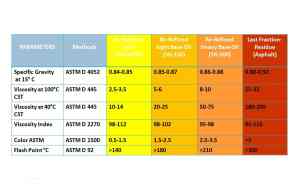
These compounds naturally have anti-oxidation and anti-wear properties.
But in the oils obtained by the hydrotreating method, sulfur compounds are completely removed, and in order to create stability and resistance against oxidation in these oils, suitable additives must be added to them.
According to the above material in relation to oil recycling, it is generally believed that when choosing a lubricant, the type of base oil and its purification method should be considered, especially in cases where the oil has an unusual application.
The mixing process is complete, the oil is ready for use. During the use of oil in any application, the additives in it are gradually lost and their properties in the oil are reduced.
Additives provide various properties such as keeping impurities and particles in suspension, neutralizing acids, creating anti-wear properties, compressibility properties and oxidation resistance properties in the oil.
For example, the color of a good quality diesel oil will turn black and blue-black a few hours after consumption.
This indicates good oil performance. Because this oil has been able to clean the parts and keep the pollution suspended in it.
As a result, it prevents the production of sediment and sludge that leads to closing the lubrication paths.
When the oil runs for a long time due to the loss of the additives in it, the viscosity of the oil increases (hardens) and it is no longer able to perform its tasks well.
Oils that have lost their properties should not be thrown away and should be collected and delivered to oil re-refining factories.
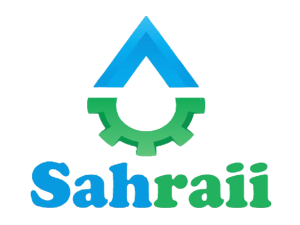
In used oil purification, various processes are used to remove pollution, water, additives remaining in oil and fuel.
In re-purification of used oils, about 80% of the original oil can be recovered.
The base oil obtained from this process is sent to the mixing unit, where the desired products are produced by adding suitable additives to it.
Tests conducted by independent laboratories have shown that in some cases, the quality of base oil resulting from re-refined oil is even higher than the original base oil.
After conducting a series of tests on a re-refined base oil, the National Research Center of Canada has announced that this oil is cleaner and more transparent in terms of color than the original base oils and can be satisfactorily used in the preparation of oil. are different.
It should be noted that this oil was obtained using modern methods of second purification (purification with hydrogen and vacuum distillation) and the method of washing with sulfuric acid was not used for its preparation.
Distillation under vacuum using decolorizing soil
In this method, the oil first enters the tray distillation tower and is affected by heat. During this process, all the components of the vaporized oil and then water and other materials such as diesel and gasoline are removed from the top of the tower, and the heavier components of the burned oil such as SN 150, SN 300 and SN 500 are removed from the bottom of the tower.
After this stage, the hot oil enters the acidification stage and then enters the decolorization stage and is decolorized by decolorizing soil.
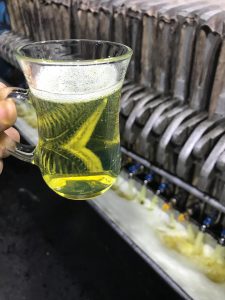
It should be noted that since in the above method the oil is under the influence of vacuum, there is no need for very high heat, therefore, in this method, the structure of the oil is less damaged than the method of distillation under atmospheric pressure, but again due to the use Many environmental problems are caused by concentrated acid and dye-bearing soil.
Thin film evaporator under vacuum
In this method, the process of separating hydrocarbons is done in the form of molecular distillation in a short distance with controlled vacuum temperature and pressure without any chemical additives (acid and soil). Speaking of hydrocarbon production, it is not bad to get useful and comprehensive information related to hydrocarbon production and the many uses of this hydrocarbon.
The base oil produced by this process is in accordance with the standards of the American Petroleum Institute (API) Group 1 and 2 or ACEA Europe, which is a suitable food for formulating and formulating a wide range of engine, turbine, and hydraulic oils. , gear, grease, etc.
- [1] Hydrofinishing
- [2] hydrotreating
- [3] Hydrofining
- [4] seal
- [5] Thin film evaporation
Processes of oil re-refining by thin film evaporation method under vacuum by Danesh Banian Niro Nomad Company of Khorasan
In this method, the oil first passes through the primary filters to separate its unsaturated impurities, after this step, it enters the flash drum and distillation tower under vacuum at a low temperature to separate light substances including water, diesel and gasoline, then to separate Different cuts of base oil, the oil is transferred to thin film distillation reactors with high vacuum pressure (less than 0.1 millibar).
The oil is turned into a thin layer on the hot surface (in a few seconds) by the brushes attached to the rotor (this technique greatly increases the molecular free path and causes the oil to evaporate at low temperature).
At this stage, oil cuts from SN 100 to SN 500 are partially evaporated and condensed, and after this stage, the sludge is separated from the oil with colored compounds and is used as bituminous sludge in various industries.
In general, it can be said that the output products of this process include group 1 and 2 base oil, high-quality industrial distillate fuel, and bituminous sludge that can be used in the production of polymer bitumen, asphalt, isogam, etc.
It is worth mentioning that in this method, no acid and soil additives are needed for color removal and purification. As a result, in addition to high efficiency, it is also environmentally friendly.
The summary of the steps of the thin film evaporation method under vacuum is as follows:
- Filtration to separate unsaturated pollution
- Separation of water and diesel
- Separation and separation of light oil cuts
- Complete evaporation of used oil and separation of asphalt pollution
Final dyeing by catalyst
Characteristics of oil re-refining by thin film evaporation method
Short residence time and high turbulence in the thin film increases the heat transfer coefficient and prevents excessive heat, cracking and clogging. In other words, work
The electric rotor causes a lot of turbulence and back mixing in a thin layer of oil and prevents the destruction of oil at high temperature. Since the temperature at which a liquid boils depends on the ambient pressure, vacuum technology is used in the above system.
Once the oil passes through the surface of the reactor wall, a large amount of evaporation takes place. A lot of oil product is obtained without any degradation or polymerization of heat sensitive materials.
High on-stream coefficient and easy maintenance and repair
Superiority of thin film technology to other oil refining methods
- High economic benefits
- Compatible with environmental standards
- High production efficiency (without corrosion, rust and coke formation)
- Short duration of oil in contact with hot surface (several seconds)
High production efficiency of more than 90% - Control and removal of toxic and odorous substances
- Evaporation at low temperature
- High heat transfer coefficients
- Low pressure drop during evaporation
- Keeping the properties and quality of the oil
- Self-cleaning capability
- Suitable for viscous liquids
- No use of acid and soil
- Low energy consumption
- Reducing the number of workers
- High quality product production
As mentioned in this article of Nironmad website, oil refining and oil recycling is one of the practical methods that is not only economical, but also an environmentally friendly method.
This work, like other active fields, has specific principles and methods that should be used according to the need and final goal.
Frequently Asked Questions
What is oil recycling?
Oil recycling, as its name suggests, means a set of methods that can be used to return used oil to the industrial cycle and use it. Much more information is given in the article.
What are the steps of recycling used oil with thin film evaporation method in vacuum?
Filtration to separate unsaturated pollution, separate water and diesel, separation and separation of different cuts of base oil, complete evaporation of used oil and separation of asphalt pollution, improvement of oil color and smell using catalyst.
We Are Also Top Exporter & Manufacturer Of Used Oil Recycling Plant , Grease Manufacturing Plant , Mini Oil Refinery.
